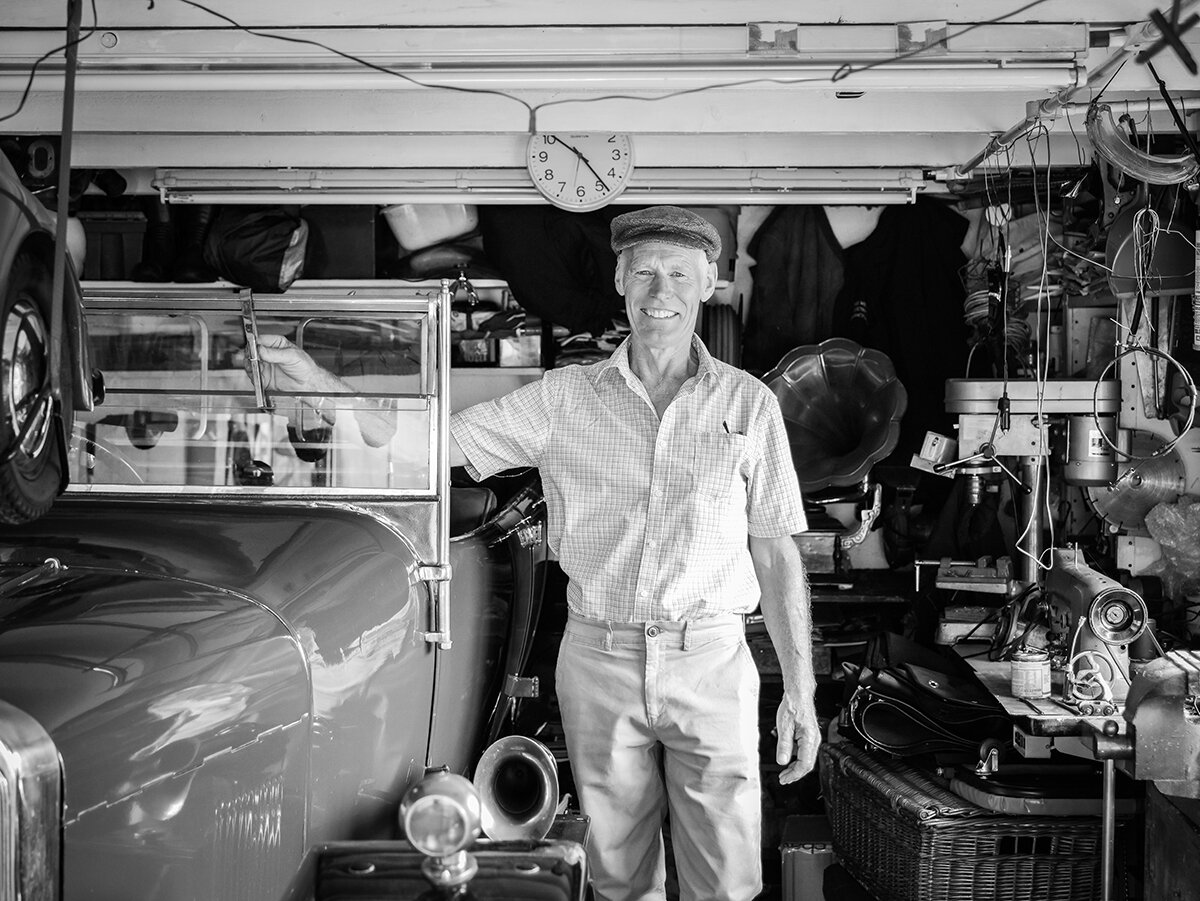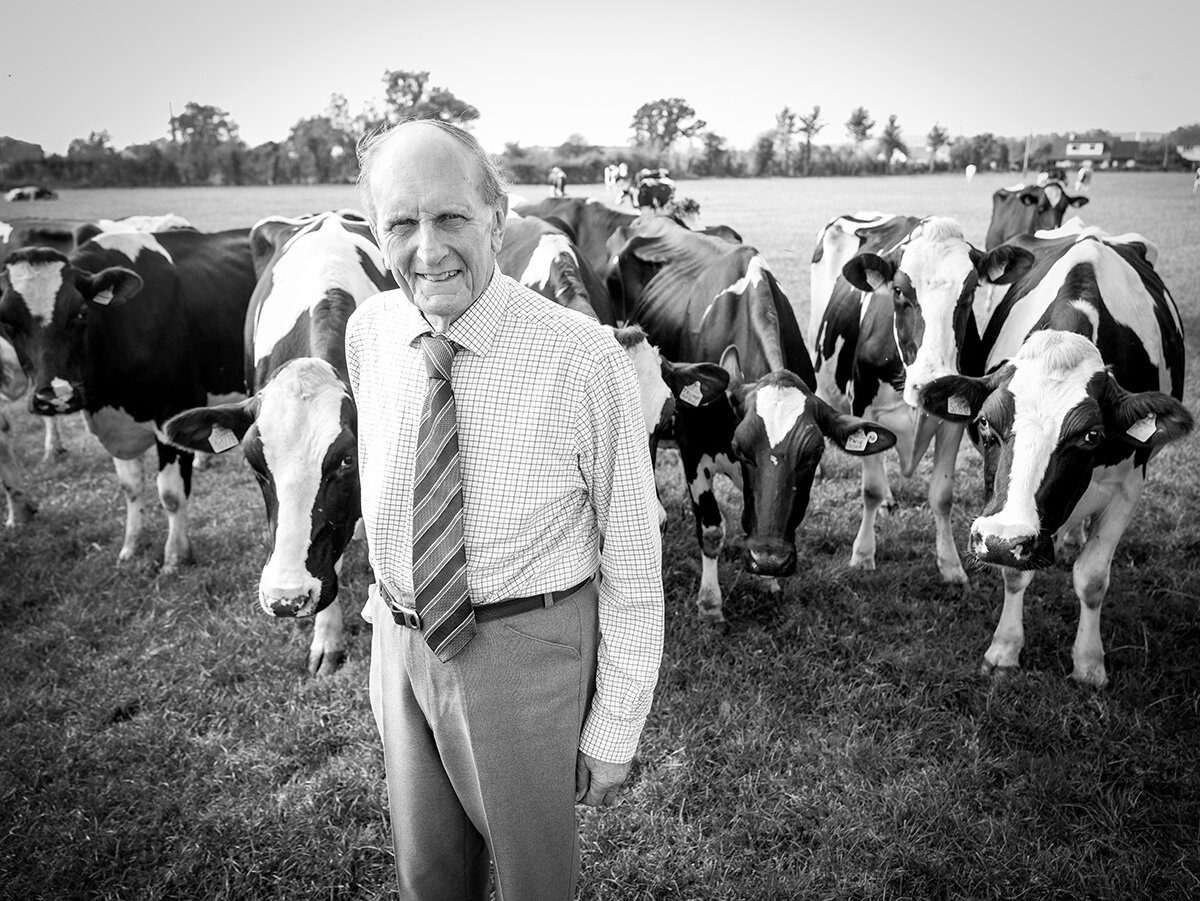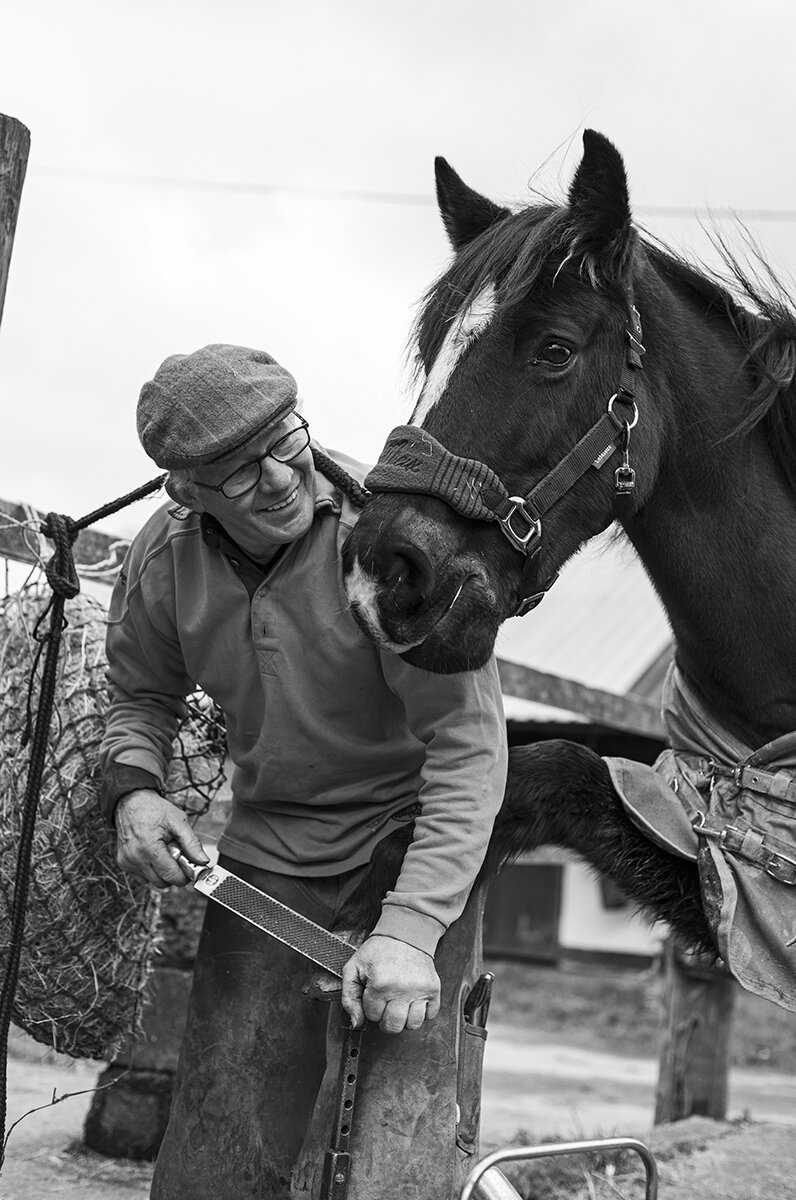- Gordon (and Linda) Shears, farmer (St Brides)
Gordon and Linda Shears (Emma Drabble)
Watch interview with Gordon and Linda Shears
The Second World War made a big impact on Cherry Orchard Farm at St Brides.
One day a Luftwaffe reconnaissance plane flew low over the farmhouse: “I waved at the pilot!” recalls Gordon. Another time a landmine fell, blocking the lane. Military trucks drove onto the sea wall, belching out smoke screens to shield the docks from enemy bombers while US GIs marched by, heading back to camp at Tredegar House. The spoils of war included kitchen spoons dropped in the pigswill, spent bullets from the nearby firing range, and little silk parachutes from military practise targets.
Gordon has lived at Cherry Orchard Farm since his father, injured First World War veteran William, moved here with his wife Beatrice in 1934. Gordon learned how to thatch the hay rick, work their cart horses, Blossom, Flower, Diamond and Bonnie, and how to haul a half-drowned cow out of the reen (the beast survived the ordeal).
He remembers rushing through floods on a double decker bus, watching an old man fish for eels using an umbrella as a keep net, and the business of living below sea level: “At night you could hear the sea,” remembers Linda. “It’s changed a lot.”
Life on the Levels Interview
Gordon grew up on a farm in St Brides and reflects on farming life in the 1940s and 50s, witnessing the transition from horse to tractor power, holes in the sea wall and German planes flying overhead during the war.

























